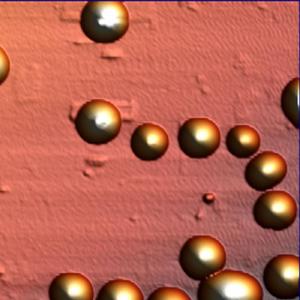Sep 30 2010
A revolutionary new spherical nanostructure, fully derived from very simple organic elements, yet strong as steel, has been developed and characterized at the laboratories of Ehud Gazit of Tel Aviv University and Itay Rousso of the Weizmann Institute of Science.
Lightweight and exceptionally strong, easy and inexpensive to produce, friendly to the environment and biologically compatible, these promising bio-inspired nano-spheres have innumerable potential uses - from durable composite materials to medical implants. The groundbreaking work was recently published in the leading journal Angewandte Chemie.
 Spherical Nano-Spheres
Spherical Nano-Spheres
The researchers, Prof. Gazit, Dr. Lihi Adler-Abramovich and Inbal Yanai from TAU's Department of Molecular Biology and Biotechnology, working in collaboration with Dr. Itay Rousso and Nitzan Kol from the Weizmann Institute and David Barlam and Roni Shneck of Ben-Gurion University, used a simple dipeptide, consisting of only two amino acids, to form spherical nanostructures. Self-assembling under ambient conditions - without any heating or manipulation - this remarkable new material is the first bio-inspired nano-material known to date that is mechanically equal and even superior to many metallic substances. While demonstrating chemical properties similar to those of the ultra-rigid Kevlar(R) polymer, already used for bullet-proof vests, the new substance is built from much simpler building blocks, enabling some important advantages: manipulation and deposition at the nano-scale, the fabrication of nano-materials of tubular, spherical and other geometries, and spontaneous formation by self-assembly. Here, indeed is a perfect building block for numerous applications:
Hard and strong as steel, this new nanostructure is an ideal element for the reinforcement of composite materials used in the space, aviation and transportation industries; biologically compatible yet extremely rigid and durable, it is an excellent candidate for replacing metallic implants; tough, light and impenetrable, it is an exceptional option for manufacturing bullet-proof vests; - to name just a few high-potential uses.
Source: http://dx.doi.org/